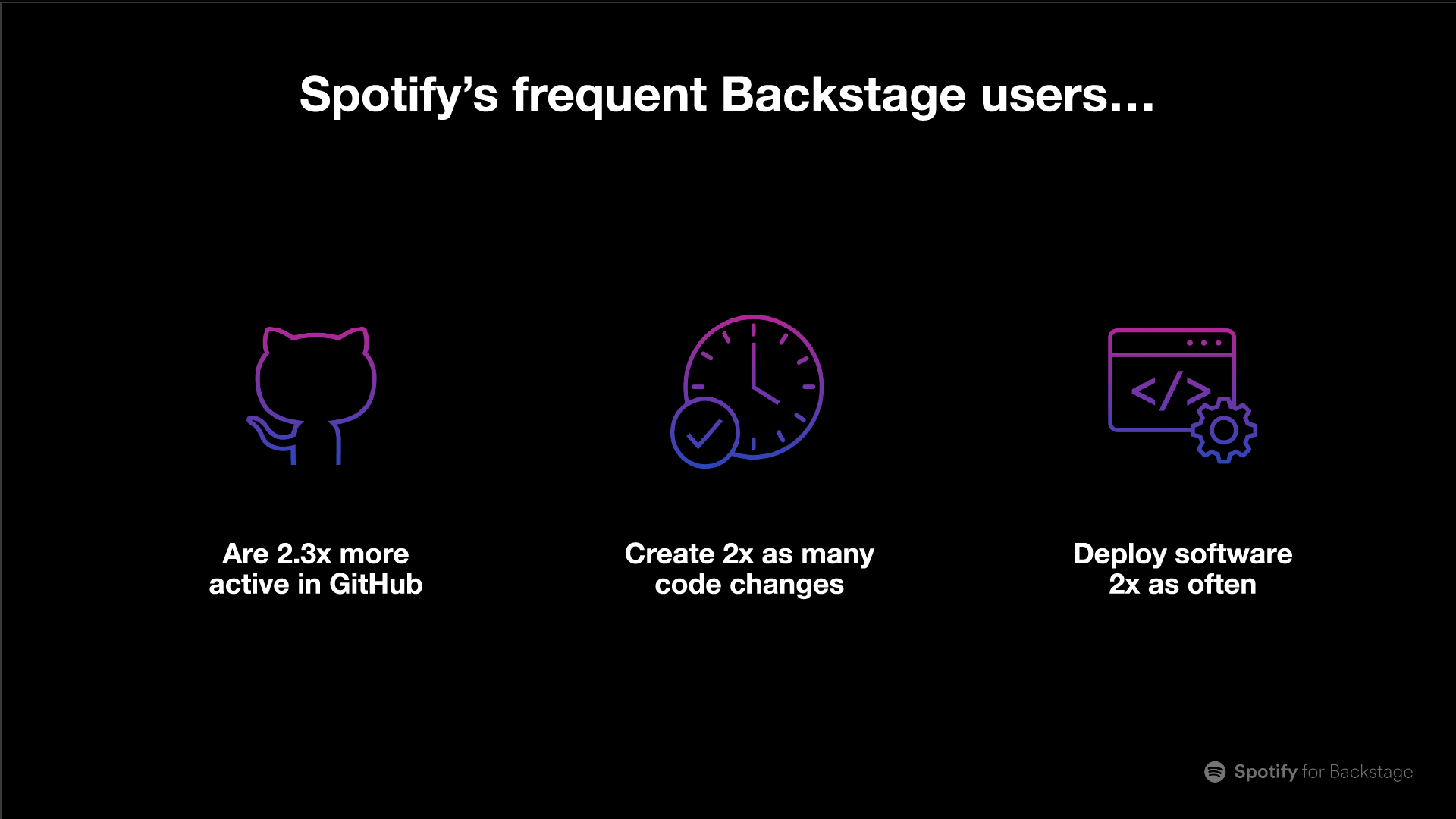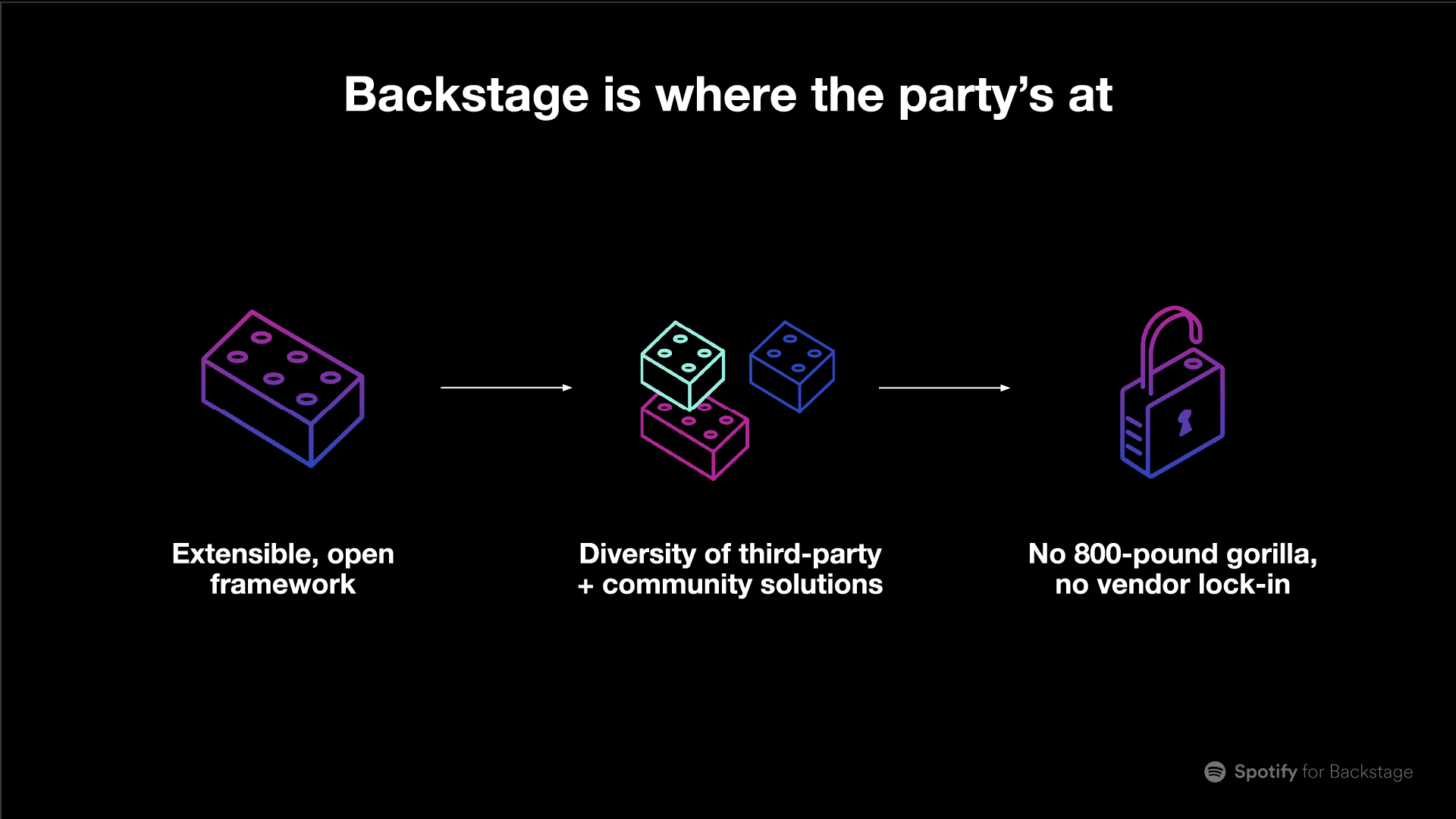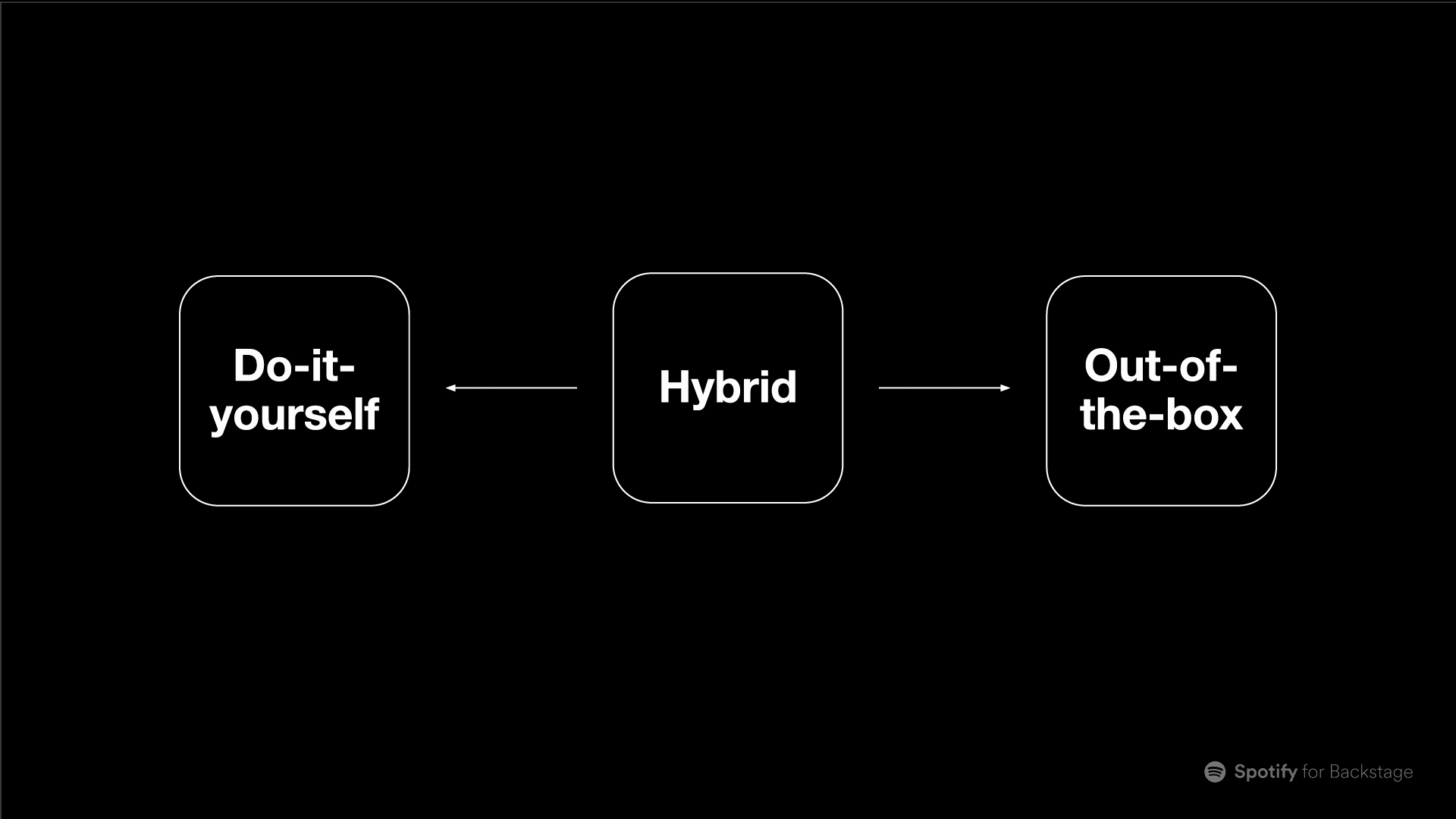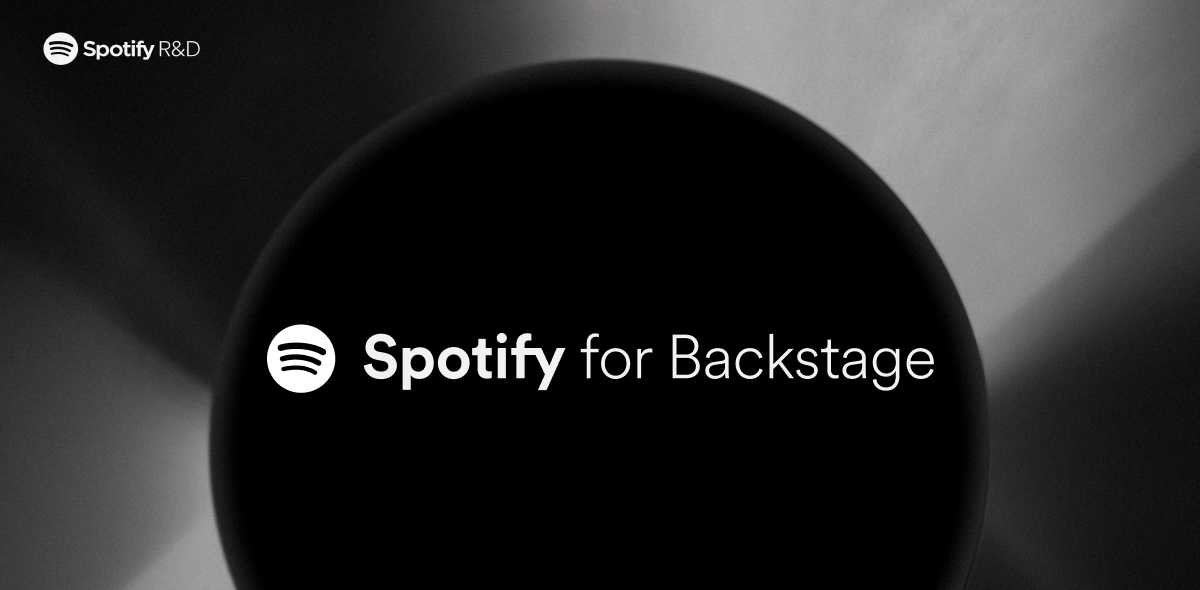Supercharged Developer Portals
Today, we announced Spotify’s latest products and services for companies adopting Backstage, the open source framework for building internal developer portals (IDPs). Whether your company needs a highly customized IDP built from scratch or an out-of-the-box solution that’s ready to go ASAP, we want to make it easy for anyone to maximize the value they get from their Backstage developer portal. You can watch today’s Spotify for Backstage roadmap webinar below to see how our latest tools help other companies build like Spotify — by prioritizing developer experience and developer productivity.
Every company is a tech company
No matter what business you’re in, you’re building software to run it and software to innovate it — so you’re really in the software business now. Whether you’re an online retailer or an airline or a bank, every company is a tech company. And all tech companies are facing the same problem: software development is getting more and more complex.
Why has it become so complex?
Yesterday, it was the proliferation of microservices, the explosion of cloud tooling, and the rise of DevOps — where you’re responsible for everything you build, from how a service is deployed to how secure it is, to how much it costs to run. Today, it’s generative A.I. and code generation tools that give teams the power to build faster than ever, while also increasing software sprawl at a previously unimaginable rate. And tomorrow? There will be a new technology, just as exciting and transformative as microservice, clouds, and LLMs, and just as likely to spur on more sprawl.
But it doesn’t even have to be something as sophisticated or world-changing as A.I. It could simply be that your parent company acquired another company, and so your engineering org just doubled in size and inherited an entirely separate tech stack. Suddenly, you have to make sense of a thousand new components built in a hundred new ways by a hundred new engineers — increasing the cognitive load of all your teams and testing the limits of context-switching and their patience.
So what’s the solution? This is where Backstage comes in…
Taming the chaos and empowering teams with a Backstage IDP
Backstage began life at Spotify as a software catalog — a directory of all the components our teams were building, from backend services to websites and libraries, emphasizing ownership and discoverability. And then we just kept adding to it. Because the platform had a simple, extensible plugin architecture, Backstage could evolve to tame chaos and complexity wherever it found it — until eventually it became a hub for everything engineering: aka, an internal developer portal (or IDP).
As a single pane of glass for all your tech infrastructure, a Backstage IDP streamlines software development — promoting the healthy parts of teams building software (ownership, tech standards, knowledge sharing, self-service, and collaboration), while minimizing the frustrating parts (silos, fragmentation, lack of discovery and documentation, dependency bottlenecks, and unclear standards).

At Spotify, we saw how much Backstage could improve developer effectiveness firsthand. Not only did Spotify’s frequent Backstage users build faster, but they also created higher-quality software compared to other developers. According to that internal study, our Backstage users are 2.3x more active in GitHub, create 2x as many code changes in 17% less cycle time, and deploy software 2x as often — and their software is deployed for 3x as long. We were onto something.
An open platform that prioritizes developer experience
Since open sourcing the Backstage framework and donating it to the CNCF, the wider tech community has experienced the benefits of improved developer experience and productivity for themselves. As part of last month’s KubeCon in Paris, the CNCF held its third BackstageCon — a testament to the platform’s continued growth and popularity. The open source framework has over 2,200 project contributors and over 3,000 adopting companies. Based on that, we estimate over two million people are using our homegrown developer portal today.

The third-party Backstage ecosystem is thriving as well. Consulting companies like Frontside, Thoughtworks, and Adaptavist provide a range of services and support for Backstage adopters. Popular tech services continue to build plugins for Backstage, including new ones coming soon from Rootly, DX, LinearB, Snyk, and Swimm. And new companies are adopting Backstage every week.
But we want to see this ecosystem grow even further. And we think Spotify has a lot more to offer Backstage adopters of all shapes and sizes.
DevEx at scale: Spotify’s secret sauce
Developer experience has long been a main ingredient of Spotify’s success. And that has put us in a unique position to become a pioneer in the field of DevOps and platform engineering. Very few companies get to test what they build in a real-world environment like ours, at the global scale we operate in.
We build developer tools based on the insights we gain from:
- Our internal R&D community of demanding Spotifiers. We have hundreds of teams who depend on this software every day to get their jobs done, whether they’re shipping innovative features like AI DJ or fighting hordes of spam bots.
- A diverse open source community of contributors and end users. Spotify’s engineers maintain the open source framework together with a global community of thousands of contributors, while also supporting a Discord channel with over 13,000 members.
- Our enterprise customers and third-party partners. Other companies have been using our bundle of Spotify-built plugins and support services. So, we learn by seeing our tools and methods being applied to companies that can sometimes be very different from our own.
All of this feedback, experience, and understanding goes into what we ship. We think this unique perspective adds unique value to the Backstage ecosystem, something no one else can offer. And that’s what you’ll see in the products we announced today.
Say hello to Spotify for Backstage
Different companies need different kinds of IDPs. There are the DIY companies who need to build a highly customized IDP from the ground up, those who need an IDP that’s quick to set up and easy to maintain right out of the box, and many others who fall somewhere in between.
Our products for Backstage are designed to supercharge your developer experience, no matter what kind of business you’re in, how big or small your company is, or where you are in your DevEx journey.

In the webinar, you’ll hear Spotify’s Backstage team talk about:
- Spotify Plugins for Backstage: Level up your custom portal with our newly updated bundle of proven, Spotify-built plugins, including Soundcheck, Role-Based Access Control, Skill Exchange, and Insights.
- Spotify Enterprise Support for Backstage: Let our Backstage experts help you build, maintain, or customize your portal with our personalized support and consulting services.
- Spotify Portal for Backstage: Get a full-featured IDP designed by Spotify, that’s both fast to get up and running, and easy to maintain. How fast? Watch the live demo of how you can set up Portal in less than five minutes, with no coding required.
To learn more about all of these products, watch today’s roadmap webinar or head to backstage.spotify.com to get started.
Tags: engineering culture, engineering leadership







